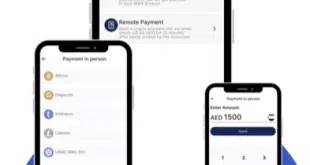It was only a matter of time before the two big international card networks responded to a recent Federal Reserve requirement that issuers make at least two unrelated networks available to merchants for debit card transactions. That time arrived at earnings season.
During an earnings call with equity analysts in late October, Visa Inc.’s chief financial officer, Vasant Prabhu, said the impact of the Fed ruling would be “minimal, if any.” He cited advantages of using networks like Visa, adding “people come to us for the value we create. We’ve competed for this business and merchants have chosen us.”
Indeed, chief executive Al Kelly, who along with Prabhu was discussing Visa’s fiscal fourth-quarter results, downplayed the idea that the Fed’s ruling, which goes into effect July 1 next year, will take transactions away from Visa’s network. “A lot of merchants in the [United States] are very familiar with the strengths they get from doing business with us,” he noted.
The ruling, which underscores a provision of the 2011 Durbin Amendment to the Dodd-Frank Act, addresses longstanding merchant complaints that issuers were not enabling a choice of networks for e-commerce transactions. The law’s provisions, which apply to both online and in-store transactions., were designed to ensure that if one network in that choice was Visa, the other couldn’t be Mastercard, and vice versa. The intent was to reinforce competition for merchant routing and drive down costs.
Many of the networks considered eligible to provide alternatives for merchants are so-called single-message systems, such as electronic funds transfer networks that combine authorization and settlement in the same message. But Kelly argued merchants are likely to prefer what he argued are the advantages of dual-message networks like Visa.
“Dual message makes a big difference with car rental and hotels,” he said by way of example. “A lot of merchants in the United States are very familiar with the strengths they get from doing business with us.”
In the end, Kelly underlined Prabhu’s point and expressed confidence Visa will come out ahead in any head-to-head comparison with other networks. In this respect, he cited Visa’s ability to combat fraud. “The liability for fraud lies with the merchant, so they’re going to be very careful [which network] they do business with,” he said.
In other remarks, the two top Visa executives indicated the worst impact of the pandemic appears to be over. “We’ve been stable for the last nine months,” Prabhu said, adding “consumers are [still] paying in the same way, which is critical to us. We’re still seeing employment levels at a very healthy level.”
Kelly and Prabhu also cited milestones Visa has reached in recent months, including the fact that the network topped 1 billion tap-to-pay transactions in July, doubling the total from a year earlier. Visa has also issued more than 4.8 billion tokens, the technology that fights fraud by masking account numbers, Kelly said. He touted progress for Visa Direct, the company’s real-time transfer network, adding the system has almost reached 7 billion endpoints.
But Kelly warned that the network will have to contend with an uncertain economy that could tip into a downturn. “We face some headwinds,” he said. “A recession will have an impact.” Prabhu, however, was quick to reassure the analysts that the company is not predicting a downturn.
“We do not have a view on a recession,” he noted, adding, “We are planning no recession, but we will have a contingency plan in place” if one develops.
For the quarter, Visa reported net revenue of $7.8 billion, up 19% year-over-year. Revenue for the year ended Sept. 30 came to $29.3 billion, up 22%.




